Ethnoarchaeology: My Glimpses
- Subhash Walimbe
- Jul 16, 2023
- 16 min read
Subhash R. Walimbe
Rtd. Faculty, Deccan College Post-Graduate and Research Institute,
Pune 411006
Why this write-up on ethnoarchaeology
A few days ago, a colleague from UIAF suggested to me to write on ethnoarchaeology. Her concern was sketchy understanding that most students have of this fascinating area of interest to contemporary archaeologists and anthropologists. I am not sure if I am really qualified to do it. By training or by profession, I happened to be remotely connected to this line of research. I did not explore or write anything that can fit into the conventional design of ethnoarchaeology. Yet, while interpreting my observations on protohistoric human skeletal remains, I always tried to visualize the cultural and ecological parameters operating behind, and thus in a way, the ethno-flavour was inevitable. My perspective may not necessarily go well with the textbook definition of the subject, but it really works!
Immediately after finishing my post-graduation in 1972, I was required to stay in a tribal area in the district of Thane for about four months. There were three small tribal hamlets of Jawahar tahsil of Thana district, of around hundred inhabitants each. These are located at the hilltop near each other but were totally inaccessible as the motorable road was 3 kms away and the primary health care centre was located at six kilometres. Geographically, these hamlets were not more than 60 kms north of Mumbai, but culturally . . . . . . centuries behind. Of course, there were changes in material culture but in the behavioural pattern they were still far from being urbanized.
In Maharashtra we remember the year of 1972 as the draught year. Draught was not limited to the routine rain shadow areas but spread almost all over the state. It did not rain at all for almost 10 months. There was no harvest. In most of the villages panic situation prevailed, and people depended mostly on government food supplies. Many moved out of the village in search of work under Employment Guaranty Scheme (EGS). To my surprise, in contrast to most other multi-caste villages, condition in those three tiny tribal hamlets was normal. There was not even a single migration. People used ration supplied by the government, whenever available, but never anxiously waited for replenishments to arrive. Inhabitants of these hamlets were very close to the nature. They knew every aspect of the eco-settings in the vicinity. They knew what they want, they extracted minimum from their ecological surroundings, never over exploited the resources, and knew where and how to get it. Big game hunting was not permitted. But small prey and fishing was always possible.
Fishing was done by adult men only. Women went gathering fruits and flowers. The little army of the children!! Their skills were mesmerizing! The expertise of a ten-year old child in targeting a flying bird or some fruit on the higher branches of tree with a ‘slingshot’ (gulale) or simply a bird-trap was fascinating. They would often catch fish only with their bare hands or use shirts they were wearing as fishing nets.
These innocent playful activities were not always for collecting food but were also part of their childhood games. There was no competition, there were no rewards other than using their collected common bounty for an afternoon feast, shared among small groups of three to four peers. They were innovative and cooked their catch without any spices on a small fire lit by gathering few dry leaves and just a matchstick. Motto was roast it and enjoy! They had intuitive skills to identify location of honeycombs, search for new variety of tubers, fruits, and other faunal edible products in their immediate ecological settings. I never saw them worry about food or about another meal. They never kept anything in the reserve and knew that if they are not able find anything else to eat, hunger can be satiated, by simply chewing on a three-to-four-inch piece of a specific tuber that is known to kill hunger but is generally not eaten when food is readily available. One stick was enough for the next twenty-four hours.
My curiosity and spirit of adventure coaxed me to experiment with it and I also had it twice or thrice during my stay of more than 100 days over there. Living with them, I learnt many things. They taught me about their unique food economy, their ability to sustain an individualized distinct identity, while interacting in close knit groups. To an outsider they may at times appear aloof and isolated in their different hamlets but I realised early, that they always maintained close communication with each other. They forewarned each other, if there were any signs of external threat. Men, women, and children from the three hamlets would come together in the evening for an evening of song and dance. Their situational response to changing ecological events was something that contemporary societies must learn from.
My initial reaction in 1972 to this unique experience was dismissive. I thought then, it is just for momentary engagement as I had to stay there only for few months. During that period, I wanted to stay occupied, did not want to feel lonely or become homesick. It was only years later, I realized that what I had experienced during that field stay was lived ethnoarchaeology. It happened eight years later! I joined archaeology department of Deccan College as lecturer in 1980 and started researching on human bones. I had the yearning to learn more about the lifeways of the early agro-pastoral Neolithic-Chalcolithic populations. Memories of four months of experiential learning in 1972 among communities, living in the 20th century Neo-Chalcolithic settlements, helped me unlock complexities of the ‘mixed’ food economy and how they evolved strategies to cope during the crisis period that challenged their biosocial environment. I must admit at the outset that this may not be the perfect method to reconstruct ethno-model, but it certainly provides reliable projections of the past.
Drawing Inferences from Planned Bio-Social Research
In mid-1970s many health-nutrition projects were initiated in India. I had the opportunity to work in two such projects. One was on Mother-Child-Health-Nutrition (KASA MCHN), run by CARE-India (July 1976-Nov 1977), and the second one was Rural Health Project of the Birla Institute of Medical Research, Gwalior (Dec 1977-Feb 1980). These were longitudinal studies, the first one was in 73 tribal villages of Thane district and the second one in 24 multi-caste villages of Datia district of Madhya Pradesh. In both assignments I was to monitor health-nutrition status of the pregnant/nursing mothers and over 2500 children below the age of six years (0 to 72 months), on alternate months. Repeated visits and constant monitoring enabled us to have a clearer perception of the morbidity stress for the pregnant mother, neonates, early childhood in rural and tribal area. This helped us map problems expected in third trimester of pregnancy, and nursing mothers, PCM and anaemia, and health threats expected for a child in the first few days-weeks-months, and during the weaning phase.
Exposure that I had in these four years helped me immensely in interpreting the morbidity/mortality issues during the protohistoric era. More than 65% of our skeletal collection
 |  |
Twin-Urn Sub-adult Burial: Inamgaon | Twin-Urn Sub-adult Burial Exposed: Inamgaon |
was representing sub-adult phase. These bones were routinely disregarded by researchers in earlier studies. In fact, the finding of sub-adults in such a huge number, and that too belonging to a well-knit temporal, cultural and regional zone, was a definite advantage to biocultural studies in India. We were dismissive of the fact that children are sensitive to adverse genetic, nutritional, epidemiological, environmental factors and metabolic upsets. Their death at a young age means they had less time to recover and for bones to remodel the evidence of developmental stressors. The stress experienced by the bygone populations can be judged by carefully examining the morphological changes in skeletal and dental remains.
Palaeopathology is the study of the evolution and progress of disease through long periods of time. Diagnosing a lesion cannot be a sole objective in palaeopathology. Combining biological and cultural data, it aims to examine how humans adapted to change in their environment.
The pattern of disease or injury that affects any group of people is never a matter of chance. It is not only the expression of stresses to which they were exposed but also reflects their genetic inheritance, the climate in which they lived, the soil that gave them sustenance and the animals or plants around. Their daily occupation, dietary habits, their choice of dwellings and clothes, their social structure and even their customs influence their morbidity pattern. The ‘ethno’ factor, therefore, proved to be of crucial importance. Our article on incidence of Harris lines was received well in our community, for example (1).
 |  |
Enamel Hypoplasia | Harris Lines |
Metabolic diseases are caused by a disturbance in the normal process of cell metabolism. Most common examples are: Harris lines, disruption in linear bone growth, and enamel hypoplasia, disruption in tooth enamel matrix formation. Not to be taken as cause of death, but these lesions are permanent signs of recovery from a very serious health threat. Age of the individual can be estimated with fair accuracy in such cases. I may mention, these are very useful parameters in forensics too.
Using an ethno-factor as an analytical tool, I could examine the relative quality of hunter-gatherer’s and farmer’s health and nutrition. It facilitated comparative analysis of effects of an increase in the population densities and less nutritious diet of the farmers vis-à-vis robust health status of the hunter-gatherers. I could imagine problems associated with sanitation/hygiene, storage/contamination of water, and despite infections, necessity of having domesticated animals in proximity. We also studied indoor pollution (smoke accumulation while cooking) and its impact on maxillary sinusitis. (2, 3)
These findings strengthened the agenda, but I was not confident to publish it. A few years later, a summer school was organized at Deccan college from 15th May to 15th June 1986. We were fortunate to have Prof. Lewis Binford. His contributions to new archaeology opened many avenues for researchers to explore. My ideas on ethnoarchaeology firmed up after a long discussion with him. During the summer school, one afternoon, he came to my laboratory to discuss ethno-angle in osteo-biographic research. He advised me to work on skeletal indicators of occupational stress. Subsequently, I started generating metric data on professionals engaged in activities involving bilaterally asymmetrical mechanical stress. Also, I could work on the impact of soft food and improved food preparation techniques on dental reduction process (4). This model further helped forwarding hypothesis on relating craniometric micro-evolutionary changes evidenced during the agricultural transition to non-genetic factors, rather than using them to hint at new or modified genetic composition (5).
Squatting facets (articular area on the distal end of tibia, bilateral asymmetry of the shape and size of clavicle, or depression on the anterior side of vertex (highest point on skull) are essentially examples of occupational stress.
Over the years, my interest in exploring ethno-parallels to protohistoric burials, (the methods of disposing the dead) gained momentum. I was of course more concerned with the bone contents of the burial. I started working with my student Worrawit Boonthai, of University of Bangkok at a site known as Pratu Pha, Lampang province, north Thailand. The site is known for 1800 rock paintings and not for being a burial site. What we discovered was both fascinating and confusing. We came across some burials, essentially in ‘primary’ condition, with complete charred skeletons in proper anatomical position. The bodies were wrapped in bamboo mat. The traces of which were clearly visible. Mat was also charred or partially charred. Probably, these were not cremated bodies. There were no cracks or warping to suggest direct exposure to fire in flesh-on (or ‘green’) condition. I was looking for ethnological parallel. Interestingly, Alok Kanungo of IIT, Gandhinagar informed me about custom of ‘smoke drying,’ still being sporadically practised by a Naga group (6).
However, any further information to support our hypothesis was difficult to obtain. I continue to seek support from our northeast colleagues. They may have an insider’s view. I am too old to explore the region personally and not in a position to do fieldwork in Nagaland. Any substantiative information would add great value to the subject. The site of Pratu Pha lies on the trade route of Sino-Tibetan groups; analogies of burial customs will be effective in comprehending the migration routes of these groups.
Exposure to fire in flesh-on or ‘green’ condition gives characteristic warping, cracking, and discolouration to bone. The Pratu Pha bones do not show such pattern, suggesting prolonged indirect exposure to fire of low intensity.
The pictures of Naga community are taken from Kanungo (2011).
However, questions remained on labelling this approach as ethnoarchaeology? Arguments posted in its favour are rooted in finding material corelates and in constructing analogies (7). It is critical to understand that the evidence collected during excavations are invariably incomplete. Most of these findings are not able to tell the complete story. Difficulties experienced in the determination of preservation include condition of the soil, resistance of the object to decaying in the ground, and world view of the populations using those objects. Ultimately, it is the cultural and social morality that decides, what to discard and in what form! As a result, it is always a difficult task for an archaeologist to interpret the scanty and patchy evidence and make it meaningful. Archaeologists must take help of various scientific techniques to make its meaning clear. Over the years, contemporary archaeologists, most of them coming from urban backgrounds are not familiar with the kind of objects/artifacts that were used in the past and may be still in use in some remote rural pockets. This lived reality makes interpretations unduly difficult for them. Many contemporary archaeologists are often perplexed by the finds, as they are not able to decipher its use in the past. The essence of ethnoarchaeology is to offer support in its timely interpretation.
To strengthen our methodology, observations are made on present day population isolates, erroneously addressed as “primitive” or take help from folk cultures and make projections to help understand lifeways of the ancient extinct populations. The folk cultures, which are not affected (or only slightly affected) by modern industrial civilization, exists in different parts of the world. People are called “primitive”, because they use artifacts and techniques and practice economies which have been abandoned by civilized societies and called ‘dated’. It is thus presumed that studying technology, material culture, economy and even social and religious practices may facilitate interpretation and reconstruction of the fragmentary and otherwise unintelligible and puzzling archaeological evidence.
Ethnoarchaeology is a relatively new branch of archaeology. It is different from mere ethnological observation, which social or cultural anthropologists do. There are three important facets of ethnoarchaeological research:
to identify problem of interpreting archaeological evidence.
to study non-industrialized societies, which exhibit various levels of technological and economic development, ranging from the stone tool using hunter-gatherers to the metal using hunter-gatherers, pastoralists and traditional agricultural practises of the small scale, non-industrialized societies.
using such studies for reconstructing prehistoric cultures in conjunction with surviving archaeological remains.
In contrast Current research approach in ethnoarchaeology is not limited to find analogies in artefacts. The term ‘ethnoarchaeology’ now implies, ‘problem oriented ethnographic research,’ conducted by anthropologists trained as field archaeologists. Ethnographers have dual advantage of observing human behaviour, along with their material possessions. In such situation, archaeological data cannot be derived from the direct observation of human behaviour. Ethnoarchaeology is designed to meet the special needs of archaeologists, who cannot question their informants about the remains they have left since the population in question is already extinct. It is not only sufficient to know how a person reacts, but one must know what makes him to react in that fashion. In a way it is not enough to draw analogies of ‘brain’ structure, understanding ‘mind’ is more important.
The changed concepts and the renewed interest in ethnography among archaeologists in the last three or four decades have resulted in a more systematic collection of ethnographic evidence and its use for larger purposes and in a critical manner. For one thing, now archaeologists and prehistorians are themselves studying simple societies. They are trying to understand the functioning of these societies in specific environments, and later use them to understand better the specific prehistoric cultures, in the same regions, or specific techno-economic adaptations of past cultures. This approach was most systematically developed by Grahame Clark in his writings (8). He demonstrates how the ethnographic evidence, especially those relating to technology, economy, material culture and settlement pattern, can be of considerable help in reconstructing the archaeological remains. Reconstructions done by R. B. Lee and Irvin De Vore among the Bushmen of South Africa, by Richard Gould among Western Australian aborigines, and writings of L. R. Binford among the Eskimos are a must read for any aspiring ethnoarchaeologist. (9, 10, 11).
I do not know if ethnoarchaeology is to be taken as a sub-discipline of archaeology or anthropology. Is it ‘anthropological archaeology’ or ‘archaeological anthropology’? Though we take anthropology and archaeology as two separate disciplines, such distinction is not always justifiable. The two disciplines of anthropology and archaeology have common interests and are often dependent on each other to present a holistic view of human societies in the past and present. Counter argument to this position is that they work on different sets of data. Partly true, because anthropological research is invariably rooted in empirical documentation often involving face to face interactions with the co-research participants. Archaeologist use material evidence left behind by populations to reconstruct social histories of bygone communities. The point of convergence is their interest in human behaviour, social interactions, customs, and rituals that tell life stories of populations now and in the past. Unfortunately, the interaction between the two disciplines is often obscured by the lack of communication. If they synergize and work together, they can contribute significantly to the understanding of dynamics of human societies.
Whatever approach one may take, conventional or ‘new’, the subject of ethnoarchaeology has enormous research potential in India. Contemporary societies in India symbolise the definition of diversity itself. This diversity is amplified in subsistence patterns. This spectrum includes urban conglomerates, rural farmers, nomadic pastorals, shifting cultivators, foragers, and hunter-gatherers. This is yet another reason which makes ethnoarchaeological research have purchase in India, as also across South Asia. In this part of the world, traditions of all kinds have survived with remarkable tenacity. These include both tangible and intangible aspects of human civilizations. These include vast body of specific craft skills to regional inter-community relations, to bio-cultural attitudes. Human ability to innovate manifests itself in extraordinary versatility in almost every aspect of practical life. We witness it in economic strategies and in variety of cuisines, it is in abundance in the domain of arts and crafts.
Eminent archaeologist V.N. Misra (12) believed that traditions that are profoundly rooted in the cultural psyche, continue in myths and symbols which concern many aspects of life and are closely linked to basic patterns of thinking.
While talking about traditions that survive, I may recall the incomplete study of the shrine near the Chalcolithic site of Inamgaon, dist. Pune (1600-500 BCE). The shrine, approx. half a km away from the site, is worshipped by a variety of devotees. It’s not a temple dedicated to a specific God. Many of the devotees belong to tribal groups of Dhulia district who travel nearly 200 kms or so, and are not connected with the local village. While we were excavating the site in 1981, following the instruction of Prof. M.K. Dhavalikar (excavator of the site) I interacted with two such families. Surprisingly they also do not remember how long the tradition continues and the reasons behind, but they do come here after any important event in their family. I could not make out if it is worship, respect, or fear, some mixed feeling probably.
Whether this tradition in any way can be traced back to the early agro-pastoral community which inhabited the site four thousand years ago, is difficult to say. The drastic change in the climate around c.1,000 B.C., leading to increasing aridity, is given as an explanation for the decline in health during the later phases of Chalcolithic period. Such climatic changes, coupled with increasing population pressure and high infection rates were probably responsible for the decline of the culture. Whatever may be the reason, but extinction of culture at the site cannot be equated with the extinction of human life therein. The mixed economic lifestyle of farming, fishing, casual hunting, and sheep/goat or cattle/buffalo pastoralism probably made those segments migrate to surrounding convenient settings like forested hilltops, slopes, cultivable flat lands, or grazing fields. It was necessary since the ecological requirements were different for these activities. It may be interesting to note the closeness at molecular level amongst the groups like Kunbi-Maratha (farmers), Mhaske Dhangars (cattle keepers), and sheep/goat pastorals in the close vanity. The genetic or ethnoarchaeological study is far less than complete and may be a potential area for further research to shed biological continuity of the Chalcolithic population to the present day.
Looking closely at tradition in this way, we must ask, how old a particular "traditional" practice is; and if it does prove to have its roots in the past, why did it survive? Traditions are consciously and deliberately followed by us in many walks of life. We observe these in various daily practises and more specifically in rituals performed on various occasions. Rites de passage of different communities living in proximity also follows a pattern of cultural specificity. Folk art and traditional textiles are classic examples that may appear similar, but a nuanced perception shows how different are these in content and connotation.
It is ability to innovate that defines cultural variety. Many of these craft practices have continued from the past and have a historical legacy and continuity. Similarly, there is widespread survival of traditional practices in agriculture and animal husbandry. Some of these appear to have been established methods of farming since the third millennium BC, and probably considerably earlier. Traditional building methods, and house plans and settlement patterns have a comparable, and in some cases even greater antiquity. All these factors combine today, to make the entire Indian subcontinent a potentially rich field for the ethnoarchaeologist.
There is an urgency to study the fast-disappearing traditions and material evidence and put them on record. We Indians are gradually adapting ourselves to new technologies. In the process, we are fast changing our values and concepts. Those three small tribal isolates which I visited 50 years back continue to exist and are no longer viewed as ‘out of the world’. The Covid episode probably brought all the world together, but dramatically changed us. These tribal children have also been introduced to online learning. Easy access to smart phones and stable internet connection, though indeed necessary, have changed them intensely. Teenagers are no longer mastering their skills at catching a flying bird with slingshot but are busy teaching operation of various software or apps to older people. The change is for good or bad? I do not know. Nor I have any control. But one thing for sure, ethnoarchaeology must evolve to keep us engaged with our past.
Endnotes
Walimbe, S.R. 2017. Incidence of Harris lines in the Protohistoric and Contemporary Indian Children: A Bio-cultural Perspective, Man and Environment XLII (2): 68-84.
Walimbe, S. R. 2022. Protohistoric Human Skeletal Evidence in India: Research Status and Prospects, Journal of Indian Anthropological Society 57(2) (2022): pp 103-122.
Walimbe S. R. 2016. Human Skeletal Studies: Changing Trends in Theoretical and Methodological Perspectives, in A Companion to South Asia in the Past (G.R. Schug and S.R. Walimbe, Ed.), pp 482-495. Hoboken, NJ: John Wiley & Sons, Inc.
Walimbe S. R. and S. S. Kulkarni. 1993. Biological Adaptations in Human Dentition: An Odontometric Study on Living and Archaeological Populations in India. Pune: Deccan College Research Institute.
Walimbe, S. R., 2007. Population Movements in the Indian Subcontinent During the Protohistoric Period: Physical Anthropological Assessment, in The Evolution and History of Human Populations in South Asia: Interdisciplinary Studies in Archaeology, Biological Anthropology, Linguistic and Genetics, (M. D. Petraglia and B. Allchin, Ed.) pp 297-320. Springer: Dordrecht, The Netherlands.
Kanungo, Alok Kumar. 2011. Ornaments of the dead among the Nagas, Journal of the Borneo (International Beads Conference), pp. 175-104.
Allchin, B. 1994. Living Traditions: Studies in the Ethnoarchaeology of South Asia. Oxford and IBH Publishing, New Delhi, India.
Clark, J. Grahame D. 1977. World Prehistory: In New Perspective. Cambridge: Cambridge University Press.
Gould, R.A. 1980. Living Archaeology. Cambridge: Cambridge University Press.
Lee, R. B. and de Vore, I. 1968. Man the Hunter. Chicago: Aldine Publishing Co.
Binford, L. R. 1988. In Pursuit of the Past. New York: Thames and Hudson.
Misra V. N. and M. Nagar. 1994. Survival of the hunting-gathering tradition in the Ganga plains and central India, in Living Traditions: Studies in the Ethnoarchaeology of South Asia (Bridget Allchin Ed.), pp. 169-192. New Delhi: Oxford and IBH.












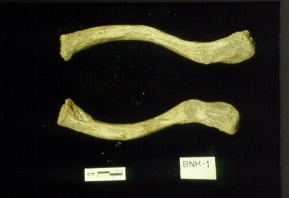



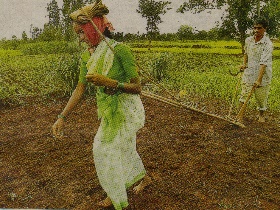

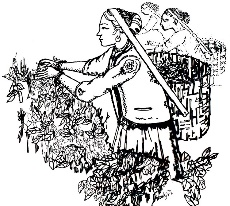
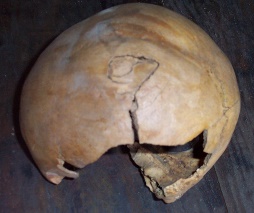



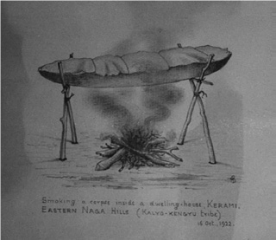



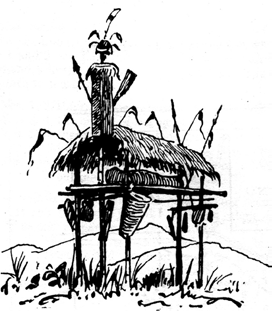
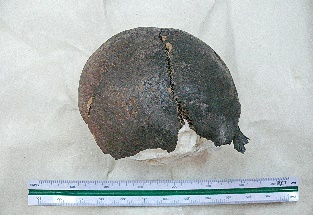


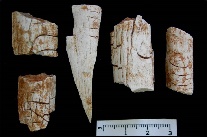

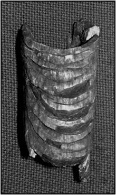

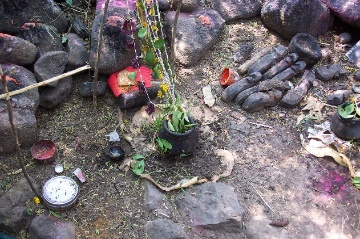
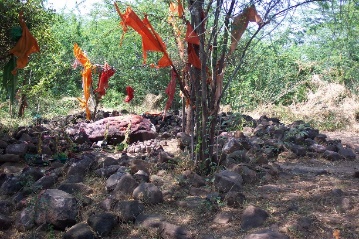
Prof. Walimbe’s write up on ethnoarchaeology is a wonderful illustration on how and in what manner archaeological data can be interpreted - how ‘flesh’ can be added to the ‘skeleton’. I particularly enjoyed his ‘Lived ethnoarchaeology’ experiences. Congratulations on an inspiring article, Sir.